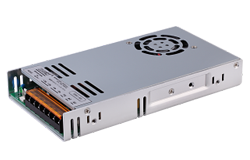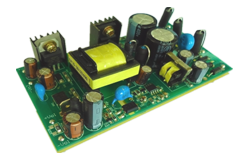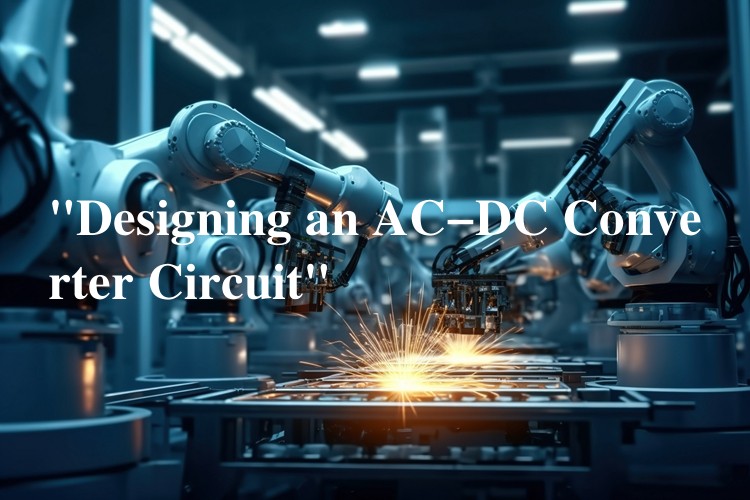nuus
Customized Electric Power Series: Harnessing the Energy Revolution
Author: ZYG Power Module Time: 2023-8-18
Introduction:
In recent years, the world has witnessed a growing demand for electricity, driven by population growth, urbanization, and industrialization. However, this surge in demand has also led to increased concerns about the sustainability, cost, and environmental impact of traditional energy sources. As a result, there has been a significant push towards harnessing the energy revolution – the adoption of cleaner and renewable sources of electric power. In this article, we will explore the various technologies and advancements that are paving the way for a sustainable energy future.
1. Solar Power:
Solar power has emerged as one of the most promising sources of renewable energy. With the advancements in photovoltaic (PV) technology, solar panels have become more efficient and affordable. Additionally, the installation of solar farms and rooftop solar panels has expanded exponentially. Solar power offers numerous benefits, including reduced greenhouse gas emissions, low operating costs, and decentralized generation. With further research and development, solar power has the potential to become the primary source of electricity globally.
2. Wind Power:
Wind power has been harnessed for centuries, but recent innovations have made it a viable contender in the energy revolution. The development of larger and more efficient wind turbines, along with improved grid integration, has expanded the capacity of wind farms. Offshore wind farms, in particular, have gained popularity due to their higher wind speeds and reduced visual impact. Wind power is abundant, clean, and can be a significant source of electricity in regions with favorable wind conditions.
3. Hydroelectric Power:
Hydroelectric power has been a reliable source of electricity for decades. By harnessing the energy from flowing water, hydroelectric power plants generate electricity without emitting greenhouse gases. However, the construction of conventional dams can have significant environmental impacts, leading to the development of innovative solutions. Run-of-river systems, tidal power, and small-scale micro-hydro projects are emerging as sustainable alternatives, providing electricity while minimizing ecological disruption.
4. Geothermal Power:
Geothermal power utilizes heat from the Earth’s core to produce electricity. This renewable energy source offers consistent power generation, with minimal carbon emissions. Geothermal power plants can be built in areas with geothermal reservoirs, typically found near tectonic plate boundaries. With the development of enhanced geothermal systems, which make use of deeper, hotter resources, geothermal power has the potential to become a more widespread energy source.

5. Biomass Energy:
Biomass energy utilizes organic matter, such as wood pellets, agricultural waste, and dedicated energy crops, to generate electricity. Biomass power plants release carbon dioxide when burning these materials, but it is offset by the carbon dioxide absorbed during the growth of new biomass. Additionally, advances in technology have enabled the production of biofuels, which can be used as a cleaner alternative to fossil fuels in transportation. Biomass energy offers the advantage of utilizing waste products while reducing the reliance on fossil fuels.
Conclusion:
The energy revolution is well underway, and the adoption of cleaner and renewable sources of electric power is a major step towards a sustainable future. Solar power, wind power, hydroelectric power, geothermal power, and biomass energy all offer unique advantages and contribute to reducing greenhouse gas emissions. Governments, businesses, and individuals must continue to invest in research, development, and infrastructure to ensure a smooth transition to these renewable sources. By harnessing the energy revolution, we can secure a brighter and cleaner future for generations to come.
vorige: Buy discount AC DC Converter SP Series: Efficient Power Conversion for Your Electronic Devices
relevante inligting
-
2023-8-13
12V AC to DC Converter for LED: Efficiently Powering Your LED Lighting Systems
Introduction In recent years, LED lighting systems have gained immense popularity due to their energy efficiency and longer lifespan compared to traditional lighting options. However, powering these systems can be a challenge, as they require direct current (DC) while most power sources provide alternating current (AC). To bridge this gap, a 12V AC to DC converter comes into play. This article aims to explore the significance of this converter in efficiently powering LED lighting systems, shedding light on its functionality, benefits, and applications. Functionality and Working Principle At its core, a 12V AC to DC converter is an electrical device that converts alternating current (AC) into direct current (DC). This process involves several key components, including a transformer, rectifier, and...
Sien besonderhede -
2024-3-1
In today's era of high reliance on electronic equipment, stable and efficient power supply is the key to ensuring the normal operation of equipment. The DC-DC step-down adjustable power module, as the "energy guardian" in electronic equipment, is gradually favored by the majority of engineers and technicians. So, what exactly is the charm of this magical power module? Today, let us uncover its mystery together. What is a DC-DC step-down adjustable power module? The DC-DC step-down adjustable power module is an electronic device that reduces DC power from high voltage to low voltage and provides stable output. Compared with traditional linear regulators, DC-DC step-down modules have higher conversion efficiency and smaller size, so they are widely used in modern electronic...
Sien besonderhede -
2023-4-27
Designing an AC-DC Converter Circuit
Designing an AC-DC Converter CircuitAn AC-DC converter circuit is a type of electronic circuit that converts alternating current (AC) to direct current (DC). This type of circuit is commonly used in power supplies for electronic devices and appliances. Designing an AC-DC converter circuit involves selecting the appropriate components and designing a circuit that can efficiently convert AC to DC.The first step in designing an AC-DC converter circuit is to determine the requirements for the circuit. This includes the input voltage, output voltage, output current, and efficiency. The input voltage is the AC voltage that will be supplied to the circuit. The output voltage is the DC voltage that the circuit will produce. The output current is the current that the...
Sien besonderhede -
2023-11-8
Introduction: In today's technologically advanced world, the demand for versatile and efficient power supply modules is constantly increasing. One such module that has gained significant popularity is the DC-DC Step Down Adjustable Power Supply Module. This module offers a reliable and efficient solution for voltage regulation in various applications. In this article, we will explore the features, benefits, and applications of this versatile power supply module. Features: The DC-DC Step Down Adjustable Power Supply Module is equipped with several advanced features that make it an excellent choice for voltage regulation. One of its key features is the ability to step down the input voltage to a desired level. This enables the module to provide a stable and adjustable output voltage,...
Sien besonderhede -
2023-11-25
DC Power Supply Module: Unleashing Reliability and Efficiency in Electrical Systems
The efficiency and reliability of these systems are crucial, and one essential component that contributes significantly to achieving these qualities is the DC power supply module. This article will explore the importance of DC power supply modules, their benefits, and their impact on electrical systems. Unleashing Reliability: Reliability is a key factor in any electrical system. DC power supply modules are designed to provide a stable and constant output voltage, ensuring that the connected devices receive the required power consistently. This stability prevents voltage fluctuations that could potentially damage sensitive components and disrupt the system\'s functionality. With a reliable power supply, the risk of unexpected shutdowns or malfunctions is significantly reduced, leading to improved system performance and increased uptime. Efficiency...
Sien besonderhede -
2023-6-1
Car Outlet Converter: Charge Your Devices on the Go!
As technology continues to advance, we have become more reliant on the use of electronic devices such as smartphones, tablets, laptops, and cameras. The problem is that our devices require a power source to function, and when we are on the go, this can be a challenge. This is where a car outlet converter comes in handy. A car outlet converter is a device that allows you to charge your electronic devices while you are on the road. It is a small device that plugs into your car's cigarette lighter and provides a power source for your devices. This means that you can charge your phone, laptop, or any other device that requires a USB port to charge while you...
Sien besonderhede

















